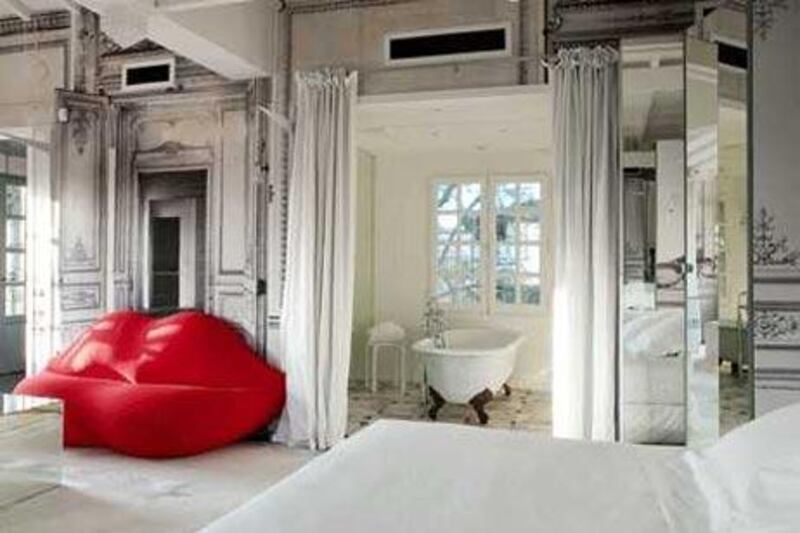Before stepping down from Maison Martin Margiela last month, the Belgian fashion designer had moved into interiors, unveiling his magical "white objects" collection for the home - and his design for the Suite Ile aux Oiseaux at the Les Sources de Caudalie hotel in France. Pure Margiela - with its white-grey colour scheme and trompe l'oeil irreverence, the pillows stitched together to form a headboard is a clever touch. The last decade for hotels has been pretty lacklustre, with few hotel icons - although Dubai's Burj Al Arab was probably one of the most photographed (it actually opened its doors in 1999). As The New York Times points out, the noughties have been defined by the growth of Middle Eastern and Asian high-rise hotels, that "broke new ground but were far from groundbreaking". Hmm, can't argue there. Buildings apart, hoteliers here still need to get the basics covered. Designers checking into Dubai for the World Interior Design Congress at the Grand Hyatt, remarked on the hotel's shortcomings. "They didn't replace the Coke in the minibar," mused Ross Lovegrove solemnly. "And no fruit basket this time," added Nadja Swarovski. "People vote with their feet," boomed the hospitality designer Bob Puccini, while commenting on the Hyatt's empty restaurants. It's time to shake things up. In a land that doesn't have public squares and plazas, it is the hotels where people meet to do business or socialise. It's time for designers to stand up to their clients and for clients to trust designers' expertise and let them get on with it, to deliver enticing, seductive and above all, authentic environments. While high-end design may be seen as a way of showing success, rather than relying on the ostentatious and opulent approach, wouldn't it be cleverer and more intriguing to take a different tack? Exposed concrete or stripped wood anyone? How refreshing would that be.
Over the last 10 years, designers have had to dramatically change the way they work, having endured the dot-com crash, property bubbles and the death of print. But it hasn't all been boom and gloom. The noughties saw design effectively redesign itself - from an industry that created better products to one that created better experiences. And while the last decade has largely been about digital design - with a never-ending stream of gadgets and gizmos to revolutionise how we work and play - wait 'til you see what 2010 has in store: Augmented reality (AR), which blends the real world with computer images, is potentially world-changing and will be seen in architecture, retail and all kinds of other fields; multimedia e-books - who wants to just read text on a screen? Downloadable extras, such as a soundtrack or video, are set to change people's reading habits from just reading, to taking part; and mobile banking - combining Nokia's software with the mobile financial service provider Obopay, will enable people without bank accounts to pay bills and each other. There are four billion mobile phone users and only 1.6 billion bank accounts. Go figure.
Digital technology and material innovation may have generated new furniture forms, but the industry is still dominated by the usual staples: chairs, sofas, tables, storage. Whether this is down to retailers and manufacturers playing it safe is open to debate, but it's surprising when you consider how our home lives are increasingly less formal. Surely this calls for more flexible, multi-functional pieces?
OK, so the humble coffee table now has a magazine rack attached and a place to hide the remote (although we now need a 'home' for several remotes) and the dining table is also the home desk, aided by an outlet or hole for wires ... There is no longer a one-to-one correlation between the things we do and the furniture we use for doing these things. People eat at a dining table, in the kitchen, in front of the TV. We drink coffee on the sofa, in the car, at our desk ... where are the pieces offering a myriad functions? A kitchen countertop that is also a dining area, ironing board, computer desktop or TV screen, a seating 'island' that is a conversation pit, double bed or snacking space ... smart solutions that make you never want to leave home, and maybe even encourage more interactive at-home friends and family socialising.
Yvonne Courtney is the co-founder of designtastic, a design/publishing consultancy and ezine.





